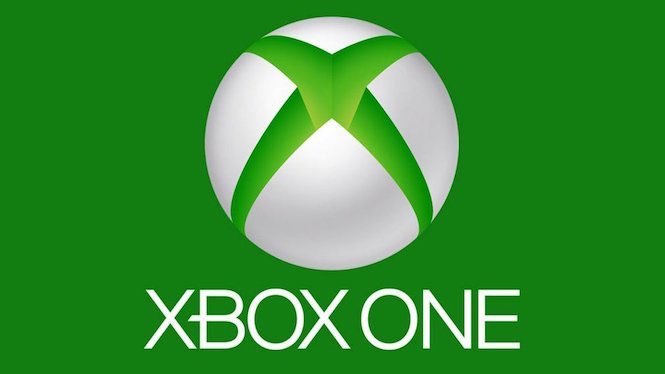
by Stone Marshall | Oct 3, 2018 | Awesome Book News, Free, Intro, Minecraft News, Minecraft questions, news, parent-news, State of Stone, Stone Marshall Book News, Stone Marshall Books, Stone Marshall Club, Stone Marshall Minecraft Adventures, Uncategorized |
This week’s Xbox Live Deals With Gold have begun trickling in, and there are a number of great deals on titles offered by WB Games.
For instance, Batman; Arkham Knight and Batman: Return To Arkham are available for dirt cheap, which means you can enjoy the full Rocksteady Studios trilogy for a swell deal.
On top of that, several Lego video games are also marked down, including the latest release, Lego The Incredibles, as well as classic favorites like Lego Batman 3, Lego Marvel’s Avengers, Lego Jurassic World and several more. And you can snag Grand Theft Auto V for cheap, too!
The sale prices are good between now and October 2nd at 6 AM EDT, so you’ve got time to do some serious shopping and add games to your library. Let’s take a look at the deals that are on hand!
Adventure Time: Pirates of the Enchiridion- $29.99
Beast Quest- $12.00
Ben 10- $15.00
Defunct- $4.49
Divinity Original Sin: Enhanced Edition- $10.00
I, Zombie- $2.67
Lords of the Fallen Digital Complete Edition- $7.50
Mega Man Legacy Collection- $6.00
Mega Man Legacy Collection 2- $11.99
Mega Man Legacy Collection 1 + 2 Combo Pack- $15.00
Plants vs. Zombies: Garden Warfare 2- $8.00
Plants vs. Zombies: Garden Warfare 2 Deluxe Edition- $10.00
Red Faction Guerrilla Re-Mars-tered- $22.49
Road Rage- $9.00
Rock of Ages 2: Bigger and Boulder- $7.50
Shiny- $7.50
Slain: Back From Hell- $6.00
Sniper Ghost Warrior 3 Season Pass Edition- $16.00
The Coma: Recut- $7.50
The Golf Club 2- $12.00
The Golf Club 2019 Featuring PGA Tour- $37.49
The Surge- $10.00
Transcripted- $4.70
Valkyria Revolution- $26.79
Vampyr- $40.19
Warhammer Bundle: Mordheim and Blood Bowl 2- $16.50
Bastion- $7.50
Batman: Arkham Knight- $10.00
Batman: Arkham Knight Premium Edition- $20.00
Batman: Return To Arkham- $10.00
Cars 3: Driven To Win- $20.00
Dying Light- $14.99
Dying Light: The Following Enhanced Edition- $20.09
Grand Theft Auto V- $19.49
Grand Theft Auto V + Great White Shark Cash Card- $32.49
Grand Theft Auto V: Premium Online Edition- $32.99
Grand Theft Auto V: Premium Online Edition + Great White Shark Card Bundle- $40.00
Grand Theft Auto V: Premium Online Edition + Whale Shark Card Bundle- $55.00
Grand Theft Auto V: Premium Online Edition + Megalodon Shark Card BUndle- $80.00
Hyper Sentinel- $10.04
Lego Batman 3: Beyond Gotham- $11.99
Lego Batman 3: Beyond Gotham Deluxe Edition- $17.50
Lego City Undercover- $15.00
Lego Jurassic World- $10.00
Lego Marvel Super Heroes- $8.00
Lego Marvel Super Heroes Bundle- $24.00
Lego Marvel Super Heroes Deluxe Bundle- $30.00
Lego Marvel Super Heroes 2- $24.00
Lego Marvel Super Heroes 2 Deluxe Edition- $30.00
Lego Marvel’s Avengers- $10.00
Lego Marvel’s Avengers Deluxe Edition- $12.00
Lego Movies Game Bundle- $20.00
Lego Star Wars: The Force Awakens- $10.00
Lego Star Wars: The Force Awakens Deluxe Edition- $12.00
Lego The Incredibles- $41.99
Lego Worlds- $20.99
Mad Max- $8.00
Middle-Earth: Shadow of Mordor Game of the Year Edition- $8.00
Middle-Earth: Shadow of War- $24.99
Mortal Kombat XL- $10.00
Scribblenauts Showdown- $20.00
The Elder Scrolls Online- $10.00
The Elder Scrolls Online Collection- $40.00
The Elder Scrolls Online: Summerset- $23.99
The Elder Scrolls Online: Summerset Collector’s Edition- $35.99
The Lego Movie Videogame- $10.00
The Lego Ninjago Movie Video Game- $25.00
The Surge- $10.00
Hurry up and get these great deals while you can!
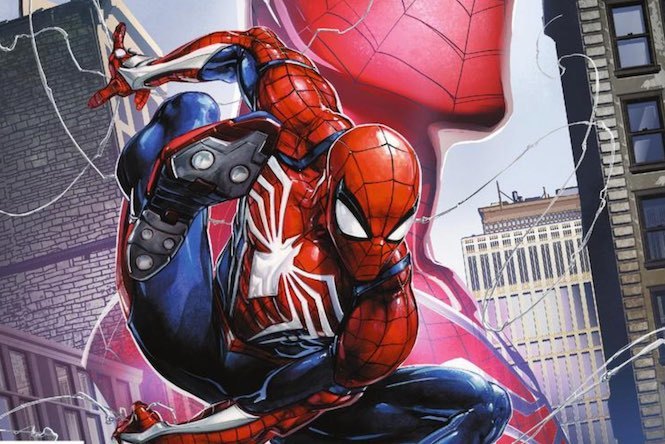
by Stone Marshall | Oct 3, 2018 | Awesome Book News, Free, Intro, Minecraft News, Minecraft questions, news, parent-news, State of Stone, Stone Marshall Book News, Stone Marshall Books, Stone Marshall Club, Stone Marshall Minecraft Adventures, Uncategorized |
At this point, there are some of you that finally beat Spider-Man on PlayStation 4. Not 100 percent yet, mind you (save for a few of you), but at least gotten through the story. So you’re probably wondering…what’s next? Well, besides the DLC that will start debuting next month, there’s also a fun side story that’s coming to the comics as well — and we’ve got a first look at which way this version of Spider-Man will be going in this particular universe.
Marvel has released some teaser images for Spider-Geddon #0, which is set to make its debut on newsstands and comic book stores starting September 26, introducing this Spider-Man to this particular world.
The first few pages have an interesting story to tell, penned by writer Christos Gage, alongside Jed MacKay, and artistically created by Clayton Crain, Javier Garron and Israel Silva. You can see all the pages below, but here’s the quick lowdown:
Spidey begins by swinging through the city, listening to J. Jonah Jameson’s latest podcast (to a point, anyway), before Mary Jane decides to give him a call. She explains that some sort of maniac is tearing his way through the city, and the hero goes to confront him.
It turns out to be none other than the Tarantula, who lets loose with a number of mechanical appendages, threatening to crush Spidey underneath them.
After making a joke about copyright infringement, Spidey tries to find a way to stop Tarantula, only to find his webs are ineffective with his electrical shielding. However, he’s able to finally subdue him with the help of a web bomb, leaving him tied up for the police.
But then things get really interesting, as another Spider-Man suddenly appears from another dimension, addressing him as Spider-Man of Earth 1048. He tells him that “he is needed,” in which he’s thrown for a loop. And that’s where the tease comes to an end. Check out the first few pages below!
You can read the rest of the story for yourself in just a few days, so be sure to pre-order your copy when you get a chance!
Spider-Man is available now for PlayStation 4 and PlayStation 4 Pro.
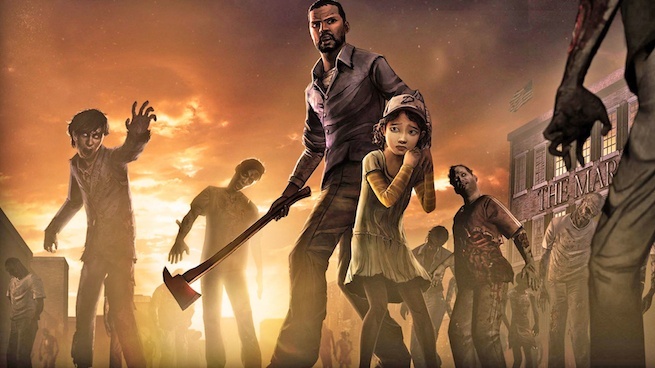
by Stone Marshall | Oct 2, 2018 | Awesome Book News, Free, Intro, Minecraft News, Minecraft questions, news, parent-news, State of Stone, Stone Marshall Book News, Stone Marshall Books, Stone Marshall Club, Stone Marshall Minecraft Adventures, Uncategorized |
In case you missed it, yesterday, out of nowhere, Telltale Games — the team behind The Walking Dead, The Wolf Among Us, Tales from the Borderlands, Batman, and more — announced its closure.
Details around the shuttering are still quite scarce — and much of what we do know is unofficial — but Telltale has confirmed that all that is left of its once 250-plus studio is a skeleton crew of 25 that will remain “to fulfill the company’s obligations to its board and partners.”
At the time, it was believed that such obligations would include finishing the ongoing, and last, season of The Walking Dead, which premiered last month. However, reports have since come out that claim the 25 developers left are actually working on Minecraft: Story Mode — which is being made in collaboration with Netflix — and that The Walking Dead: The Final Season has been cancelled. And these reports are further validated by Netflix confirming that Minecraft: Story Mode will not be impacted by the studio closing.
The whole situation is very confusing, and hopefully, further elucidation will arrive in the coming days from Telltale, who said it would soon provide an update on what the closure specifically means for its portfolio.
But the confusion doesn’t end there: people are perplexed about why the studio is closing in the first place. And part of this is because the studio’s considerable size and its involvement in huge IP gave off the aura of nothing but the greenest of pastures.
Telltale was founded in 2004, but it wasn’t a household name in the gaming community until 2012, when it released The Walking Dead, a game that would go on to be not only a critical success, but a commercial one. To this day, it is considered one of the best games of last-generation, as well as one of the most impactful.
Not only did The Walking Dead put Telltale on the map, allow it to scale rapidly, and tackle some of the biggest IP in entertainment, it brought back the adventure genre, which was a ghost before 2012. Granted it was with a Telltale-style twist, but it helped paved the way for many games in the forgotten genre to since release.
With all of this in mind, it’s easy to understand why some are confused and dumbfoundead about the studio’s sudden closure. But according to a new report, it’s quite clear why it closed: it wasn’t making money on any of its games.
According to Joe Parlock, a contributor at Forbes, who cites an inside, anonymous source, only season one of The Walking Dead and Minecraft made money for Telltale, everything else, especially Batman, was a failure.
Apparently, only Minecraft: Story Mode and 7 Days to Die were making a profit. The rest was investor money and the netflix deal, which dried up.
According to the source, Batman t a n k e d and was one of the worst commercial failures for Telltale.
Basically, only the first season of The Walking Dead made money. Everything between that and Minecraft was a financial failure – Wolf, everything post-Season 1 of TWD, Borderlands, Game of Thrones. All failures.
As always, all reports should be taken with a grain of salt, after all, the only thing you can really ever take to the bank is official confirmation. However, it’s obvious something had to go wrong, and that some games had to fail in order for Telltale to shutter like this.
And it’s not very hard to consider that after The Walking Dead season one, none of Telltale’s games — besides Minecraft: Story Mode — were successful for the studio. Not Wolf Among Us, not Game of Thrones, not even Batman, ever could generate the same type of critical and larger mainstream commercial buzz that Clementine and Lee did eight years ago.
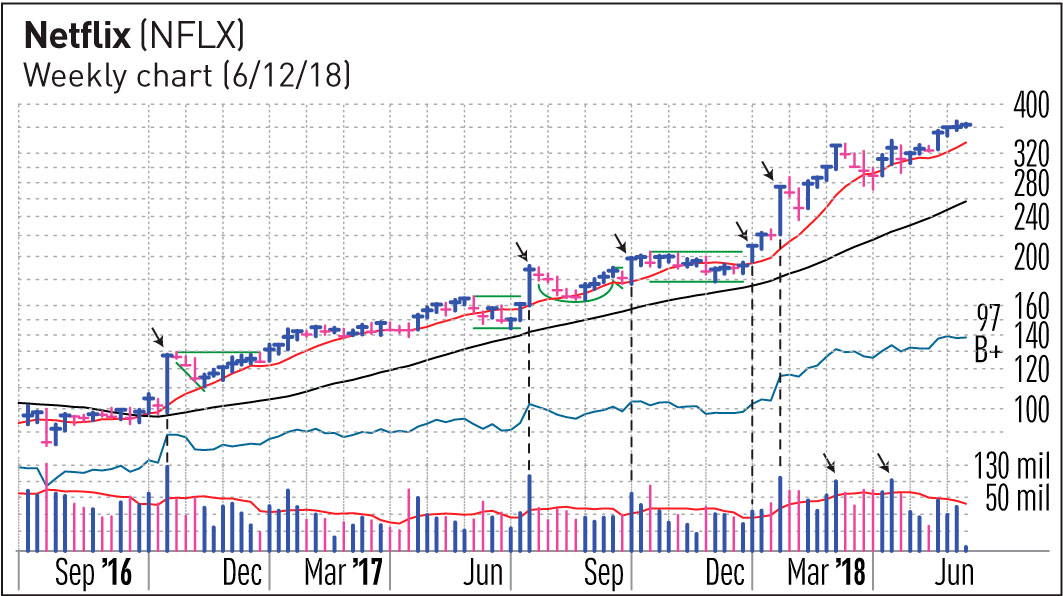
by Stone Marshall | Oct 2, 2018 | Awesome Book News, Free, Intro, Minecraft News, Minecraft questions, news, parent-news, State of Stone, Stone Marshall Book News, Stone Marshall Books, Stone Marshall Club, Stone Marshall Minecraft Adventures, Uncategorized |
Streaming content leader Netflix (NFLX) punched higher in soft trade Monday, easily leading its FANG stock peers and climbing further up the right side of a developing base pattern.
The gain came despite news from video content developer Telltale Games on Friday that it was paring back to a skeleton crew, preparing to fulfill certain obligations before shutting its doors for good. Loss of the developer for content tied to such high-profile series as “Walking Dead” (AMC) and “Game of Thrones” (HBO), and films including “Guardians of the Galaxy” (Marvel Studios) rattled the industry.
A statement from Netflix said its “Minecraft: Story Mode” title, under contract to Telltale, “is still moving forward as planned.” Industry news sources reported that plans for Telltale to develop Netflix’ “Stranger Things” interactive series had been scrapped.
Netflix grew up around renting movie DVDs, delivered by mail to subscribers’ homes. It was among the very first major names to dive full-flung into online video streaming services. And as the industry has shifted toward higher-quality original content, Netflix has duked it out with AT&T’s (T) HBO and Amazon.com (AMZN) for creative precedence.
Minecraft: A More Mature Interactive Series
The “Minecraft: Story Mode” project with Telltale reveals another advance in creative content. It reportedly aims to develop a five-episode narrative feature allowing users to “choose-their-own-adventure” path through the series. Netflix had previously developed and launched several similar series based on children’s titles, including “Stretch Armstrong”, “Puss In Boots” and “Buddy Thunderstruck.”
Although not really games, the series use gamelike programming to offer “branching points,” at which users can make choices from optional plot lines through which the protagonist will move forward. This provides users multiple optional narrative adventures from each branching point.
The Telltale shutdown gives a sense of how challenging and talent-consuming the new medium might be. Despite its high-profile contract wins, the company apparently still could not remain afloat.
The “Minecraft: Story Mode” and “Stranger Things” deals with Telltale appeared to be Netflix’ first efforts to present the interactive storytelling technique to a slightly more mature audience.
In an interview with IndieWire in May, Netflix writer Kevin Burke said Netflix’ interactive efforts have grown increasingly complex, offering more options at each branching point, requiring multiple layers of writing, and of animated footage.
“Your experience could be from, I believe it’s like 13, 14 minutes is your shortest way to get to an ending, and I think it goes up to about 44 or 45 minutes to play the longest path connecting. And then there’s a lot of variations in between that,” Burke told IndieWire.
Netflix’ New “Diablo” Series Builds On Castlevania Success
In another video game-related angle, on Friday, Variety reported that Netflix was also fattening up its original content lineup by developing a series based on Activision Blizzard’s (ATVI) successful video game “Diablo.” The hack-n-slash video game is on its third edition, “Diablo III.”
The project will be Netflix’ second series based on a video game. It is just preparing to release the second season of the vampire thriller “Castlevania”, a game developed by Japan’s Konami Holdings. The Netflix release is scheduled for Oct. 27.
The 2.3% advance of Netflix shares Monday hauled the stock about 4% above its 50-day moving average. That put it a bit less than 20% off its Aug. 20 low, and above the midpoint of the left side of a developing base pattern.
Netflix has been battling to hold support at its 10-week line since mid-September. Monday’s move, like the other two advances in that struggle, came in very weak volume. That is part of the reason the stock’s Up/Down Volume Ratio has slipped to a subpar rating below 1.0.
Fortunately, all of the losses since mid-September have also occurred in weak trade. That suggests institutional investors are neither selling nor buying, but waiting for the stock to find its direction.
Netflix’ Accumulation/Distribution Rating corroborates that reading, holding at a better-than-average B-. This suggests institutions are holding steady, but not exiting the stock.
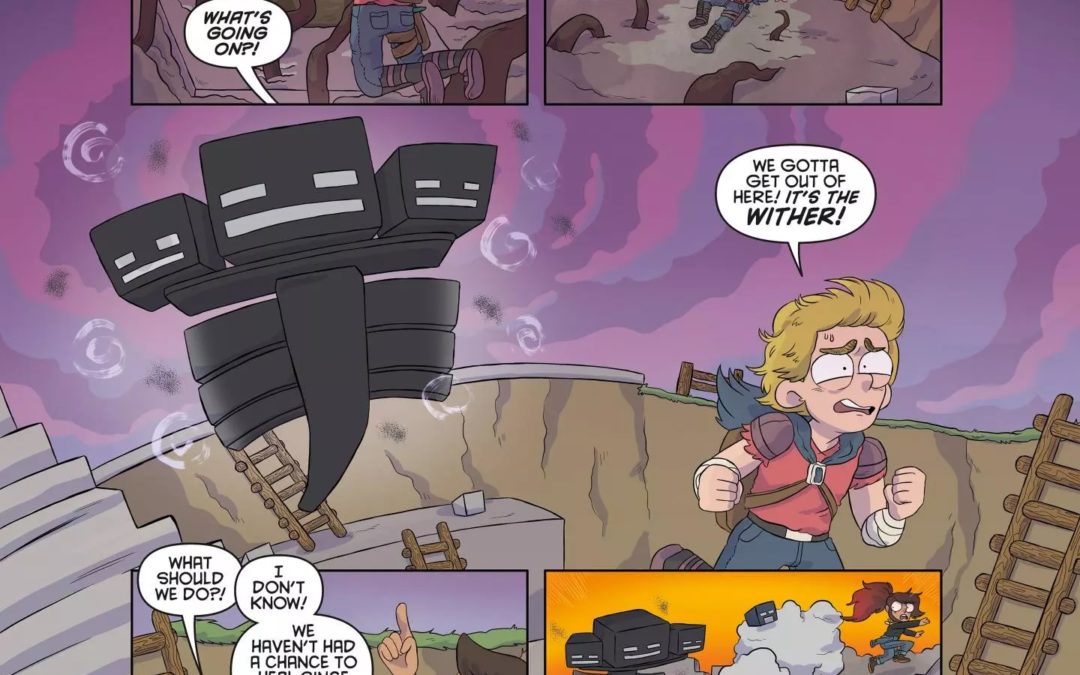
by Stone Marshall | Oct 1, 2018 | Awesome Book News, Free, Intro, Minecraft News, Minecraft questions, news, parent-news, State of Stone, Stone Marshall Book News, Stone Marshall Books, Stone Marshall Club, Stone Marshall Minecraft Adventures, Uncategorized |
One of the most infuential and popular videogames of all time is headed to the comic store. Dark Horse Comics, Mojang AB and Microsoft are teaming up for a “multi-project publishing partnership” focused on Minecraft. The first offering? A series of Minecraft graphic novels, set for release next summer. Scroll down for an exclusive first look at Minecraft Volume One.
Here’s what we know about the story of the upcoming comic so far, courtesy of Dark Horse: “In Minecraft Volume One, everyday kid Tyler’s life is changed when his family moves away from the town he’s always known. Thankfully, Tyler has a strong group of friends forever linked in the world of Minecraft! Tyler, along with his friends Evan, Candace, Tobi and Grace, have gone on countless adventures together across the expanses of the overworld and are in need of a new challenge. They decide to go on the Ultimate Quest—to travel to the End and face off against the ender dragon!”
“We are very excited at the prospect of bringing Minecraft to comics,” said Dark Horse President and Founder Mike Richardson of the partnership. “The world of Minecraft is vast with countless stories to tell. We look forward to working with the great people at Mojang AB and Microsoft to bring these stories to its enormous fan base.”
Since its release in November 2011, Minecraft has sold 144 million copies across all platforms, making it the second best-selling video game of all time. (Tetris remains the king of the hill.) Nearly seven years on, the Minecraft fandom is going strong, with more than 75 million fans playing the game every month. “We can’t wait to follow the incredible imaginations that Dark Horse’s comic creators will bring to the world of Minecraft,” said Lydia Winters, Chief Brand Officer of Mojang AB, said of the collaboration.
Minecraft Volume One will feature the work of writer Sfé R. Monster (The Beyond Anthology, Seven Stories from the Sea), artist Sarah Graley (Kim Reaper: Vampire Island, Our Super Adventure) and letterer John J. Hill (Bedtime Games, Superman). Minecraft Volume One debuts summer 2019. The 80-page graphic novel will be released next summer, and is currently available for pre-order from Target, Amazon, TFAW and other retailers. It will sell for $9.99.
While you wait to get your hands on the graphic novel, Minecraft is available to play on just about every gaming device conceivable: Windows, Mac OS, Windows Phone, iOS, Android, Amazon Kindle Fire, Xbox 360, Xbox One, PS3, PS4, PS Vita, Wii U, Switch, DS, Apple TV, Oculus Rift and Gear VR.
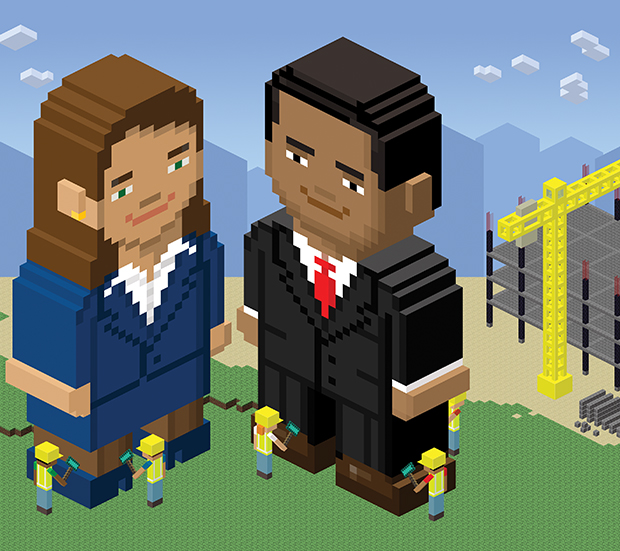
by Stone Marshall | Oct 1, 2018 | Awesome Book News, Free, Intro, Minecraft News, Minecraft questions, news, parent-news, State of Stone, Stone Marshall Book News, Stone Marshall Books, Stone Marshall Club, Stone Marshall Minecraft Adventures, Uncategorized |
Children are already learning the skills they will need for a digital future through play, says Jaimie Johnston. The trick for the construction industry will be how to attract and harness this pool of talent
Jaimie Johnston BW 2018
Computer games may not sound like a big part of the future for construction design, but they could be. Through Minecraft, and games like it, kids are already learning the skills they will need to excel at virtual design.
For those of you who haven’t played it, Minecraft involves “mining” different kinds of 3D blocks and then “crafting” them into new creations. There are parallels with Lego, but Minecraft goes much further. On LinkedIn, tech commentator Joel Chappell says: “It’s like building something out of Lego after you made and moulded the plastic and dyed it with plants that you grew yourself, and then going on an adventure inside it through forests and deserts while monsters are chasing you”.
It’s entertainment, of course, but the skills required to play it are absolutely relevant to the process of virtual design. Players need to be able to build in response to different biomes (terrain), problem-solve in a “live” environment while facing pressure from monsters, use materials in creative and unique ways, and collaborate with others around the world.
This hasn’t gone unnoticed by the Chartered Institute of Building, which has created “Craft Your Future” within the Minecraft world. Through it, young learners collaborate in teams to design, plan and build within Newtown, a specially created virtual city. Commercial and educational organisations have seen the potential of the system, too. When Sioux Steel was planning a new site earlier this year, young people were invited to contribute their ideas for the project through Lego and Minecraft. Also this summer, children in Northern Ireland had the opportunity to construct a virtual replica of the new Armagh collage campus through Minecraft.
All of this matters, because what the building industry needs from its designers is changing fast. A new generation of digital natives will work in partnership with algorithms. Their contribution will increasingly be the initial concept, which is where design value is greatest. A much smaller proportion of their time will go into documenting the idea than it does now. These skills will also be needed in many other industries, so construction must be able to compete to attract them – and some, like the
tech giants, have deep pockets.
The digital natives will drive a new kind of automated, or platform, construction. As in Minecraft, they will create unique structures from sets of standardised components, designed to fit together, as they do in manufacturing. This means much less waste and faster build times. And because efficient assembly processes can be designed in, site workers will need far less training than traditional trades require. The skills shortage we currently face makes that a very good thing.
Some might question whether digital natives can replace existing architectural training or cope with the practical challenges. A Minecraft building may not be structurally sound, for example. Yet structural requirements, and other standards – for fire resistance or electrical connectivity – could be designed in. The technology doesn’t exist yet, but it seems inevitable that it eventually will.
Others might argue that existing architectural education should simply be adapted to meet new needs, but architecture training is already very expensive – it can cost up to £120,00 for a five-year course. Moreover, technology is developing so fast that knowledge will need to be constantly renewed.
Ideas such as skills acquisition through Minecraft sound radical, but so does the future. The World Economic Forum estimates that 65% of children who are now in primary education will end up in jobs that don’t exist today. It’s a view echoed by Dell Technologies, which predicts that 85% of the jobs that will exist in 2030 haven’t yet been invented. Few would doubt that technology is driving change at an ever-increasing rate, but it is also extending the scope of human creativity. Today, young people can learn virtual design through play. Our industry will need their skills, and so will many others.
Jaimie Johnston is director and head of global systems, Bryden Wood





